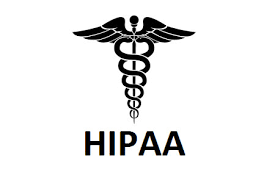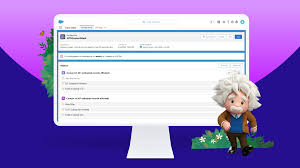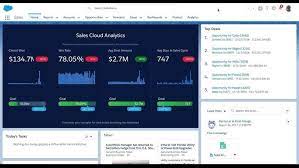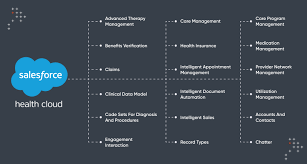Granular Locking in Salesforce
Granular Locking in Salesforce: Enhancing Performance & Reducing Contention Granular locking in Salesforce is a powerful feature designed to minimize record lock contention, particularly in high-data-volume environments or those with complex automation processes. By refining traditional locking constraints, this mechanism allows Salesforce to manage simultaneous updates more efficiently, improving system performance and reducing errors. What is Granular Locking? Granular locking is an advanced record-locking mechanism that applies locks at a more detailed level, preventing unnecessary locking of parent or related records. This is especially useful in scenarios where multiple records are updated concurrently, reducing row lock contention in parent-child relationships. Key Features: ✅ Fine-Grained Locks – Prevents excessive locking of parent or related records.✅ Enhanced Concurrency – Allows multiple simultaneous updates to child records without conflicts.✅ Improved Performance – Minimizes errors like “Unable to lock row” by reducing contention. Why is Granular Locking Important? 1️⃣ Concurrent Record Updates 2️⃣ Optimized Automation 3️⃣ Scaling High-Volume Transactions How Granular Locking Works Granular locking ensures that:🔹 Parent records remain unlocked when child records are updated.🔹 Locks apply only to the specific records being modified instead of affecting entire datasets. Example: 🚫 Without Granular Locking: Updating an Opportunity record locks the parent Account and all related child records.✅ With Granular Locking: Only the specific Opportunity record is locked, allowing the Account and other child records to remain accessible. When Does Granular Locking Apply? 🔹 Master-Detail Relationships – Prevents parent records from being unnecessarily locked during child record updates.🔹 Campaign Hierarchies – Ensures that updates to child campaigns don’t lock parent campaigns.🔹 Sharing Recalculations – Reduces locking issues when Salesforce recalculates sharing rules for parent-child data relationships. Benefits of Granular Locking 🚀 Reduced Lock Contention – Minimizes conflicts in multi-user environments.📉 Fewer Errors – Decreases “Unable to obtain exclusive access to this record” errors.⚡ Faster Automation – Improves workflow and trigger execution speed.📊 Better Scalability – Enhances performance in high-transaction environments. Best Practices for Using Granular Locking ✅ Optimize Relationship Design: Avoid complex parent-child structures that could lead to unnecessary locking.✅ Minimize Simultaneous Updates: Reduce concurrent updates on the same parent record.✅ Use Asynchronous Processing: Implement Batch Apex or Queueable Apex for large data operations.✅ Test in High-Volume Scenarios: Simulate real-world data loads in a sandbox environment.✅ Monitor Locking Issues: Use debug logs and Event Monitoring to track and resolve locking conflicts. Common Issues & Solutions ❌ Error: “Unable to Lock Row”🔹 Cause: Simultaneous updates to related records.🔹 Solution: Redesign workflows or use asynchronous processing to reduce contention. ❌ Slow Performance in Campaign Updates🔹 Cause: Hierarchical campaign relationships triggering excessive locks.🔹 Solution: Ensure campaigns are structured to take advantage of granular locking. ❌ Automation Conflicts🔹 Cause: Multiple automation tools acting on the same records.🔹 Solution: Consolidate triggers and workflows to minimize overlaps. How to Enable Granular Locking for Campaign Hierarchies Although granular locking is enabled by default for most Salesforce operations, certain features (like hierarchical campaign locking) require manual activation. 🔹 Steps to Enable Granular Locking in Campaign Hierarchies:1️⃣ Navigate to Setup.2️⃣ Go to Campaign Settings.3️⃣ Check the box for Enable Improved Campaign Management (Granular Locking).4️⃣ Save your changes. Conclusion Granular locking is a vital feature in Salesforce that optimizes record management by reducing contention, minimizing errors, and improving system performance in high-transaction environments. By implementing best practices and leveraging fine-grained locks, organizations can scale efficiently while ensuring smooth automation and record updates. For teams handling complex data relationships, granular locking provides the flexibility, scalability, and reliability needed to maintain a high-performing Salesforce environment. Like Related Posts Salesforce OEM AppExchange Expanding its reach beyond CRM, Salesforce.com has launched a new service called AppExchange OEM Edition, aimed at non-CRM service providers. Read more The Salesforce Story In Marc Benioff’s own words How did salesforce.com grow from a start up in a rented apartment into the world’s Read more Salesforce Jigsaw Salesforce.com, a prominent figure in cloud computing, has finalized a deal to acquire Jigsaw, a wiki-style business contact database, for Read more Service Cloud with AI-Driven Intelligence Salesforce Enhances Service Cloud with AI-Driven Intelligence Engine Data science and analytics are rapidly becoming standard features in enterprise applications, Read more




















